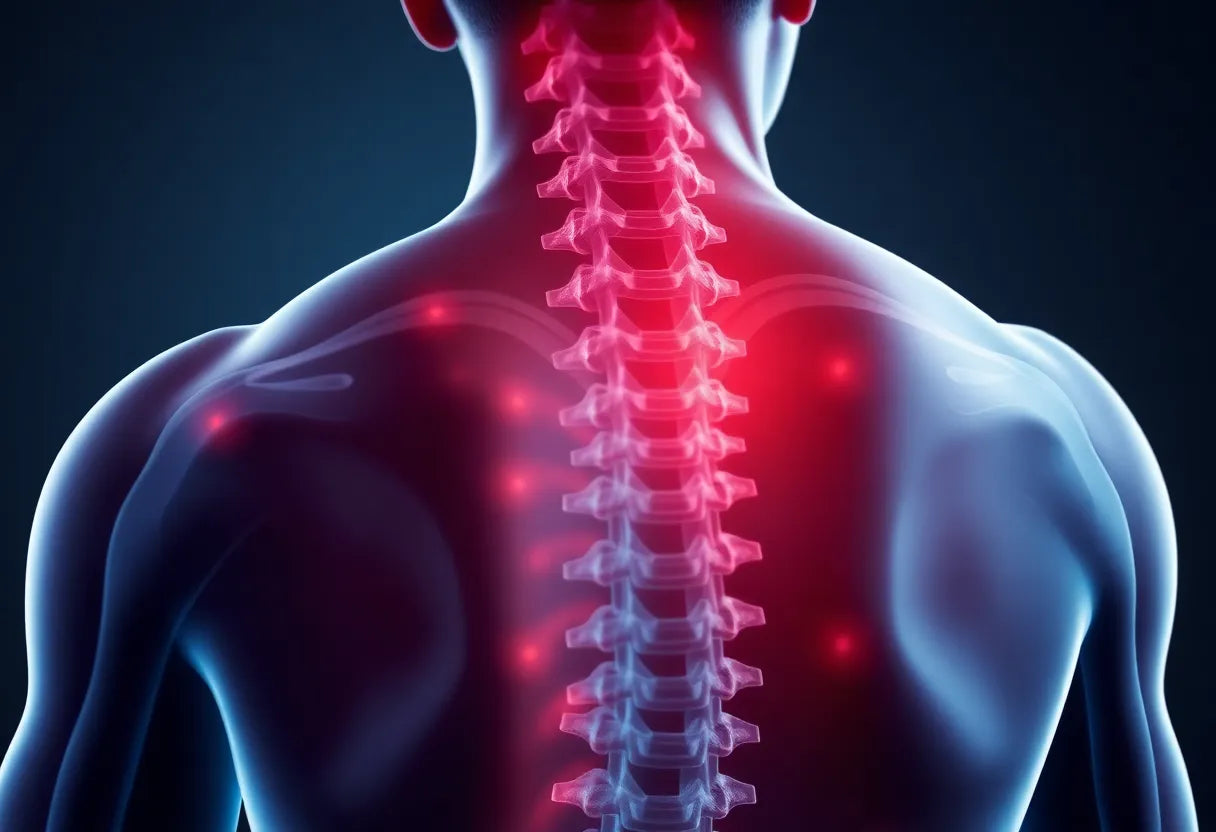Experiencing a pinched sciatic nerve can be a painful and debilitating condition that affects many individuals worldwide. The sciatic nerve, which runs from the lower back down through the legs, can become compressed or irritated due to several factors. Common causes include herniated discs, where the soft center of a spinal disc pushes through its tougher exterior, and muscle tightness, particularly in the lower back and gluteal regions. Sciatica, the condition resulting from a pinched sciatic nerve, is prevalent and can severely impact daily activities, making even simple movements challenging. Addressing this condition is crucial for improving one's quality of life and maintaining mobility.

Lumbar support belt
Provides adjustable lower back support to relieve pain from sciatica and herniated discs.
the role of exercise in relieving sciatic nerve pain
Exercise plays a pivotal role in alleviating sciatic nerve pain. By engaging in targeted stretches and movements, individuals can relieve pressure on the sciatic nerve, reduce inflammation, and enhance overall mobility. These exercises are not only effective but are also evidence-based, with many health professionals recommending them as part of a comprehensive treatment plan. Incorporating these exercises into your routine can help manage pain and prevent further complications.
One of the primary benefits of exercise for sciatica is its ability to loosen tight muscles that may be contributing to nerve compression. For instance, the knee-to-chest stretch is particularly effective in loosening the gluteal and lower back muscles, thereby reducing nerve compression. Similarly, the piriformis stretch targets the piriformis muscle, which, when tight, can irritate the sciatic nerve. By regularly performing these exercises, you can alleviate tension and promote better nerve function.
Moreover, exercises such as hamstring stretches and the cobra stretch are instrumental in reducing tension around the pelvis and promoting spinal extension, respectively. These movements not only help in relieving pain caused by herniated discs but also contribute to improved spinal health. Incorporating sciatic nerve flossing, a technique designed to mobilize the nerve and reduce adhesions, can further enhance nerve glide and reduce discomfort.
It's important to approach these exercises with caution, ensuring that they are performed gently and within your comfort level. If sharp pain occurs, it is advisable to stop and consult a healthcare professional. By consistently practicing these exercises, you can significantly reduce sciatic nerve pain and improve your overall function, leading to a more active and pain-free lifestyle.
effective exercises for relieving a pinched sciatic nerve
Incorporating specific exercises into your routine can significantly alleviate the discomfort associated with a pinched sciatic nerve. Let's delve into some of the most effective exercises recommended by health professionals for managing sciatic nerve pain.
knee-to-chest stretch
The knee-to-chest stretch is a fundamental exercise that helps in loosening the gluteal and lower back muscles, which often contribute to sciatic nerve compression. This simple yet effective stretch can be performed easily at home.
- Lie on your back on a comfortable surface, ensuring your body is fully supported.
- Gently bring one knee towards your chest, keeping the other leg flat on the ground to maintain stability.
- Hold the position for 15–30 seconds, focusing on a gentle pull in your lower back and glutes.
- Switch to the other leg and repeat, aiming for 2–3 repetitions per leg.
piriformis stretch
Targeting the piriformis muscle is crucial, as tightness here can irritate the sciatic nerve. The piriformis stretch is designed to address this specific issue.
- Sit on the floor and cross your right ankle over your left knee.
- Lean forward gently, keeping your back straight, or apply gentle pressure on your right knee.
- Maintain the stretch for 20–30 seconds before switching sides.
- Perform 2–3 repetitions on each side to ensure balanced flexibility.
hamstring stretch
Hamstring stretches are essential for reducing tension around the pelvis and alleviating nerve pull, which can exacerbate sciatic pain.
- Stand and place your right foot on an elevated surface, such as a chair or step.
- Ensure your leg remains straight and lean forward gently from your hips.
- Hold the position for 15–30 seconds, then switch to the other leg.
- Repeat 2–3 times per leg for optimal results.
cobra stretch
The cobra stretch is particularly beneficial for promoting spinal extension, which can relieve pain from herniated discs often associated with sciatic nerve issues.
- Lie face down on the floor, positioning your hands beneath your shoulders.
- Gently push your upper body off the ground, ensuring your hips remain on the floor.
- Hold the stretch for 15–30 seconds, feeling the extension in your lower back.
- Perform 2–3 repetitions to encourage spinal mobility.
sciatic nerve flossing
Sciatic nerve flossing is a technique aimed at mobilizing the nerve, reducing adhesions, and improving the nerve's glide through surrounding tissues.
- Sit on a chair with your back straight, ensuring a stable position.
- Extend your affected leg, flexing your ankle so that your toes point upwards.
- Slowly move your foot back and forth, gently mobilizing the nerve.
- Perform 10–15 repetitions, avoiding any sharp pain or discomfort.
These exercises, when performed consistently and correctly, can play a significant role in managing sciatic nerve pain. It's essential to listen to your body and perform these movements within your comfort zone. If you encounter any sharp pain, it's advisable to stop and consult a healthcare professional for further guidance. By integrating these exercises into your daily routine, you can enhance your mobility, reduce pain, and improve your quality of life.

Men's Posture Shirt™ - Black
Patented shirt that stimulates muscles to improve posture and relieve back pain.
safety tips and precautions for sciatic nerve exercises
When dealing with a pinched sciatic nerve, it's crucial to prioritize safety while performing exercises. These exercises are designed to alleviate pain and improve mobility, but they should be approached with care to prevent further injury. Here are some essential tips and precautions to keep in mind:
- Perform exercises slowly and gently, focusing on controlled movements. Avoid any sudden or jerky motions that may exacerbate pain.
- Listen to your body and stop immediately if you experience sharp pain or discomfort during any exercise. It's normal to feel a stretch, but pain is a signal to stop.
- Consult with a healthcare professional before starting any new exercise regimen, especially if you have existing health conditions or severe symptoms.
- Ensure that you are performing exercises on a comfortable and supportive surface to avoid unnecessary strain on your body.
- Gradually increase the frequency and intensity of exercises as your body adapts and your symptoms improve.
By adhering to these safety guidelines, you can effectively incorporate these exercises into your routine and work towards alleviating sciatic nerve pain.
frequently asked questions
what causes a pinched sciatic nerve?
A pinched sciatic nerve is often caused by a herniated disc, bone spur, or muscle tightness compressing the nerve. These conditions can lead to irritation and inflammation, resulting in pain and discomfort.
how often should I perform these exercises?
Aim to perform these exercises daily or as recommended by a healthcare provider. Gradually increase the frequency as tolerated to help alleviate symptoms and improve mobility.
can these exercises completely cure sciatic nerve pain?
While exercises can significantly reduce pain and improve function, they may not completely cure the underlying cause. Consistent practice and professional guidance are key components of effective management.
when should I see a doctor about my sciatic nerve pain?
Seek medical attention if you experience severe pain, weakness, or loss of bladder/bowel control, as these may indicate a more serious condition requiring prompt evaluation.
are there any exercises I should avoid with a pinched sciatic nerve?
Avoid exercises that exacerbate pain or involve heavy lifting. Focus on gentle stretches and consult a professional for personalized advice tailored to your specific condition.
By incorporating these exercises and following the recommended precautions, you can take proactive steps towards managing sciatic nerve pain effectively. Remember to consult with healthcare professionals for personalized guidance and to ensure the best outcomes for your condition.
Källor
- Medical News Today. (2020). "What to know about sciatica."
- Nexus Pain Center. (2021). "The Top 3 Exercises for Sciatica Pain Relief."
- Yorkville Sports Medicine. (2021). "Top 5 Sciatic Nerve Stretches to Beat Nerve Pain."
- GoodRx. (2021). "Stretches for Sciatica."
- Healthline. (2020). "9 Stretches for Sciatic Nerve Pain."
- NHS. (2020). "Exercises for sciatica."
- Cleveland Clinic. (2020). "Sciatica."
- YouTube. (2021). "Sciatica Exercises for Pain Relief."
- YouTube. (2021). "Best Sciatica Stretches for Quick Pain Relief."


















